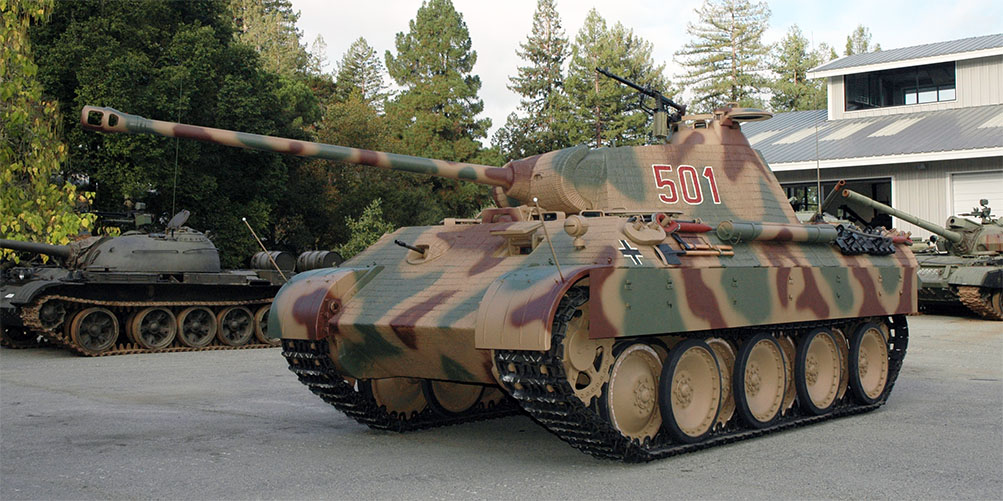Intended as a counter to the Russian T-34, the German Panther A proved to be a very lethal tank. The Panther’s excellent combination of firepower, mobility, and protection served as a benchmark for other nations’ late war and post-war tank designs, and it is regarded as one of the best tanks of World War II.
The Panther tank’s design was a compromise of various requirements. While having essentially the same engine as the Tiger 1 tank, it had better frontal armor (including the benefit of sloped
armor, increasing the effective armor depth), superior gun penetration, was lighter and thus faster, and could traverse rough terrain better than the Tigers. The Panther proved to be deadly in open country and long range engagements against tanks like the T-34, but vulnerable in close quarters combat.
Designed in 1942 and deployed in 1943, the Panther tank had a V12 engine, 7.5 cm KwK 42 L/70 cannon, Maschinengewehr 34 machine gun and carried a crew of 5 (driver, radio-operator/hull machine gunner, commander, gunner, loader). Roughly 6000 Panthers were built between 1943 and 1945. Thankfully, (for the Allies) the Panther was plagued with mechanical problems. The engine frequently overheated and suffered from connecting rod or bearing failures. Gasoline leaks from the fuel pump, as well as oil leaks from gaskets produced fires in the engine compartment. Transmission and final drive breakdowns were the most common and difficult to repair.
Surviving Panther tanks are very rare. There are just over a dozen Panthers currently on display in the world. The MVTF Panther is one of six in working order and the only one in the United States.



